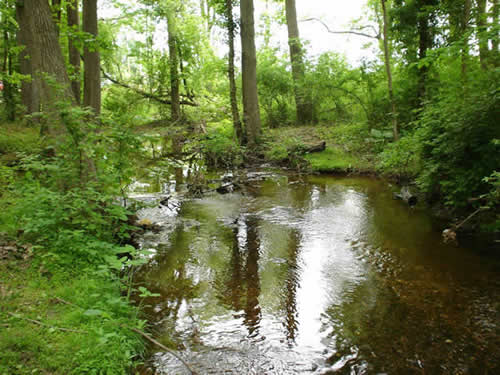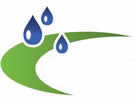Projects & Programs - Agricultural Watershed Planning & Implementation
Watershed Restoration Plan for the Upper Salem River Watershed

The Watershed Restoration Plan will concern the Upper Salem River above the Salem River at Woodstown, which appears on Sublist 5 for phosphorus and on Sublist 4 for fecal coliform according to the New Jersey 2004 Integrated Water Quality Monitoring and Assessment Report. This waterway, including Memorial Lake, has been elected a priority segment as per NJDEP Division of Watershed Management.
Phase I of this work
is currently being funded by the New Jersey Department of Environmental
Protection (NJDEP) and includes the identification of sources of nonpoint
source pollution through visual assessment and spatial analysis. Phase
II of this work, is the Watershed Restoration Plan for the Upper Salem
River Watershed.
Based upon the NJDEP/United
States Geological Survey (USGS) water quality monitoring network, the
Upper Salem River is impaired for phosphorus and is listed on Sublist
5 of the New Jersey 2004 Integrated Water Quality Monitoring and Assessment
Report. Additionally, a Total Maximum Daily Load (TMDL) for fecal coliform
has been proposed for 17.9 miles of the Upper Salem River. This TMDL requires
84% reductions in nonpoint source bacteria loads from this agriculturally
dominated watershed. Furthermore, the Salem River up to and including
Memorial Lake are priority stream segments. Ultimately, the goal of this
project is to improve the water quality of the Salem River by developing
a Watershed Restoration Plan that when implemented will achieve the required
TMDL reduction and bring the waterway into compliance with surface water
quality standards for phosphorus.
This watershed-based plan will include the following:
• identify the causes and sources that will need to be controlled to achieve the load reductions that are estimated as part of this watershed-based plan;
• estimate the load reductions expected for the management measures that are identified as part of this watershed-based plan;
• identify nonpoint pollution sources (NPS) management measures that will need to be implemented to achieve the load reductions estimated as part of this watershed-based plan;
• identify critical areas for the implementation of these NPS management measures;
• estimate the amounts of technical and financial assistance needed to implement the plan;
• identify potential sources of funding to implement each management measure that is identified in the plan;
• outline an informational/education plan to enhance public understanding of the project and encourage early and continued participation in implementing the plan;
• develop a ranking system to identify where resources should be targeted;
• provide a schedule for implementing the NPS management measures that are identified in the plan;
• outline a set of criteria that can be used to determine whether loading reductions are being achieved over time and if substantial progress is being made toward attaining water quality standards, and
• detail a monitoring component to evaluate the effectiveness of the implementation efforts over time.Deliverables:
Upper Salem River Watershed Restoration & Protection Plan:
Data Report, July 2012
- Data Report Appendix A - Upper Salem River Phase I Report
- Data Report Appendix B - Upper Salem River Watershed Restoration and Protection Plan, Data Summary – Biological Assessment (Prepared January 2011)
- Data Report Appendix C - Quality Assurance Project Plan for the Upper Salem River Watershed Surface Water Quality Monitoring Program (June 5, 2007)
- Data Report Appendix D - Tabulated Water Quality Monitoring Data
- Data Report Appendix E - Presentation of pH, Total Phosphorus, E.coli and Fecal Coliform Instream Concentrations in Graphs
Upper Salem River Watershed Restoration & Protection Plan: Model Report, February 2012
Upper Salem River Watershed Restoration & Protection Plan,
November 2012
Project Funding Source: NJDEP 319(h)
Project Partners:
Rutgers Cooperative Extension of Salem County
Dave Lee, Cooperative Extension Department Head
51 Cheney Rd, Suite 1
Woodstown, New Jersey 08098
Phone: 856-769-0090/Fax: 856-769-1439Lenny Rera
Cumberland/Salem County Soil Conservation District
Natural Resource Specialist
1513 Deerfield Pike
PO Box 144
Deerfield, NJ 08313
Phone: 856-451-2422/Fax: 856-451-1358
cumbsoil@aol.comBorough of Woodstown
Jeanette M. Gerlack, Borough Clerk
P.O. Box 286
Woodstown, NJ 08098-0286Township of Pilesgrove
Edward J. Kille, Mayor
1180 Route 40
Pilesgrove, NJ 08098
Phone: 856-769-3222/Fax: 856-769-5490Upper Pittsgrove Township
Jack Cimprich, Mayor
PO Box 786
Elmer, NJ 08318
Phone: 856-358-2763/Fax: 856-358-8773
